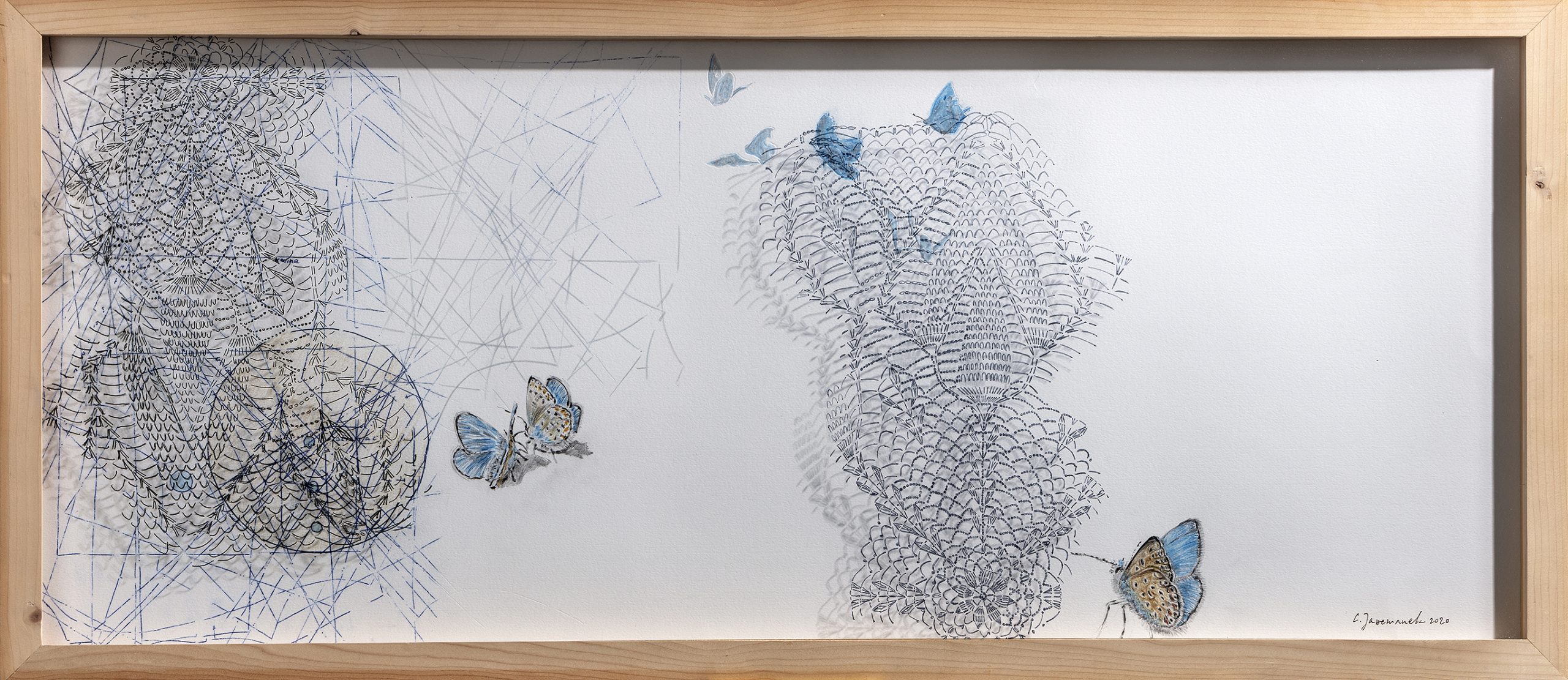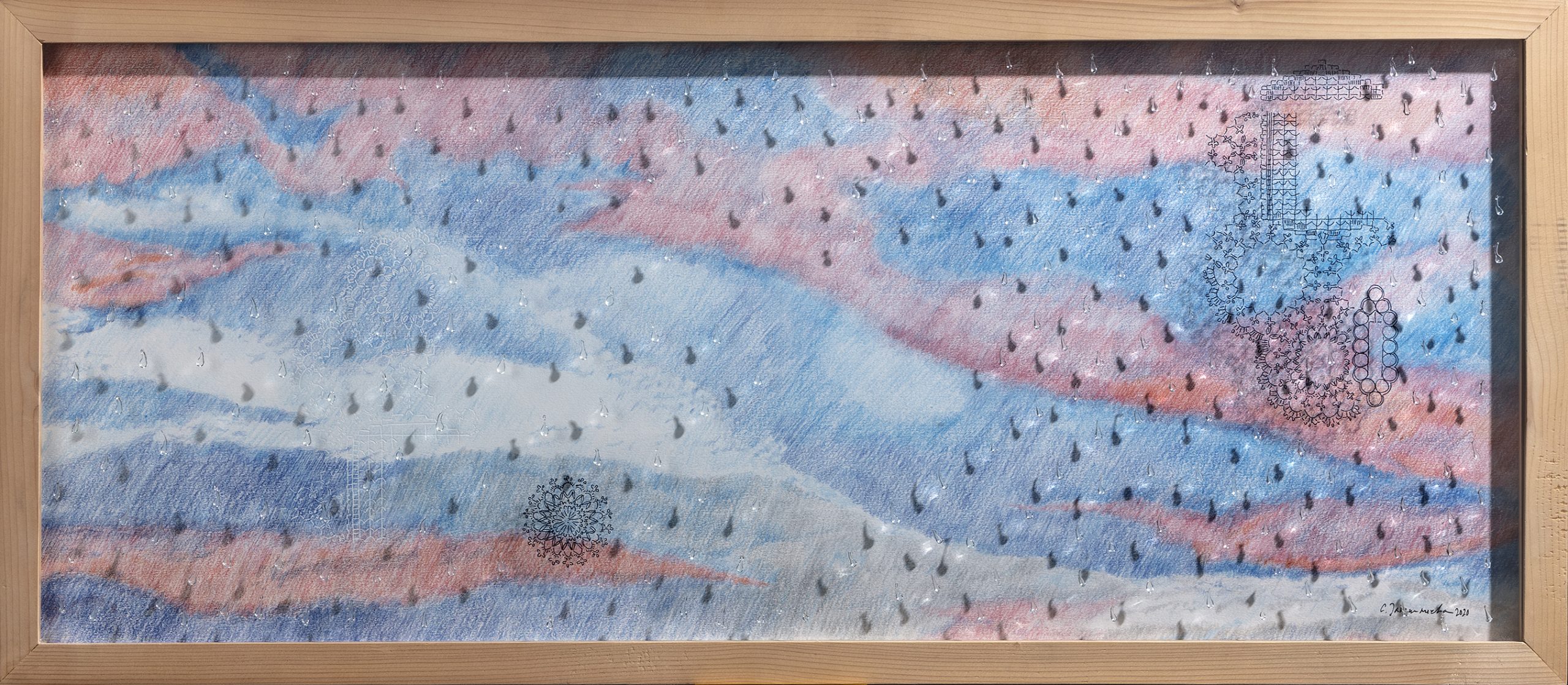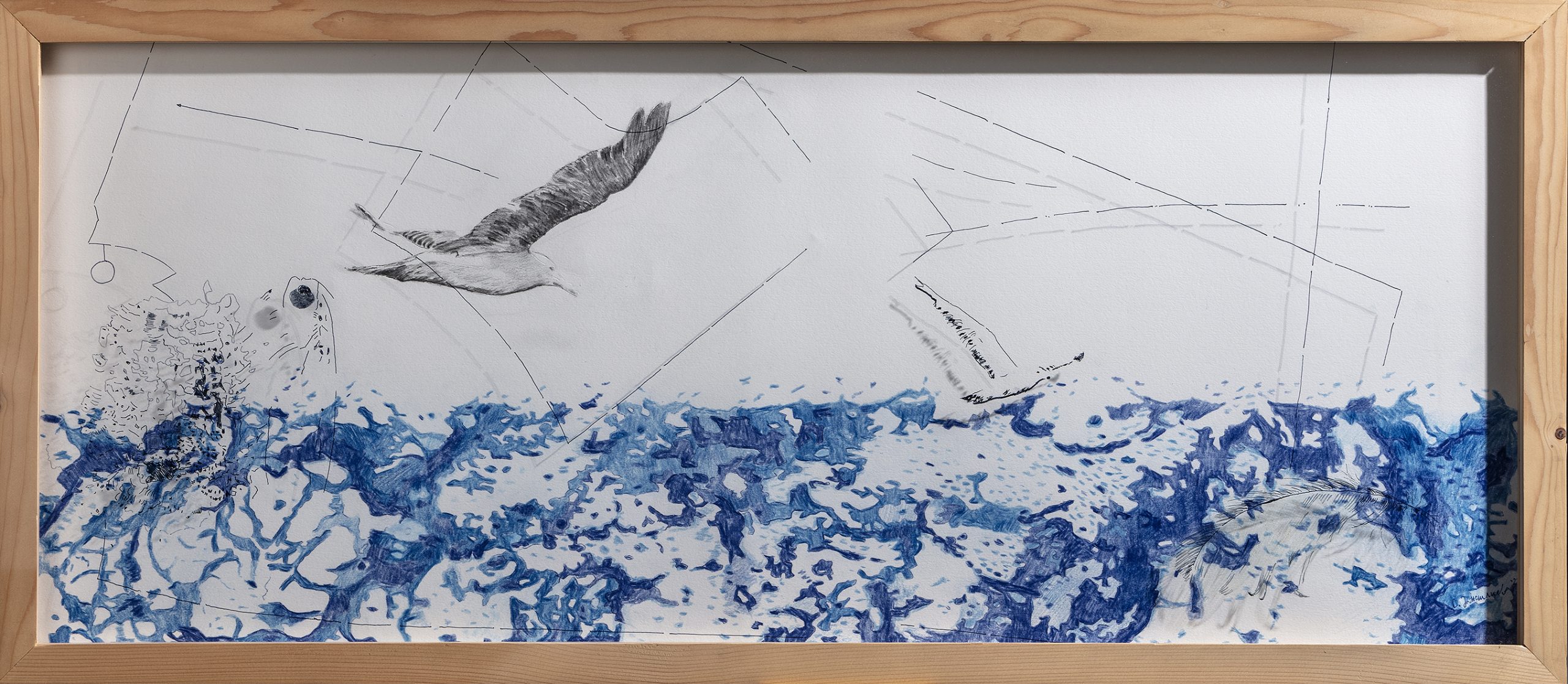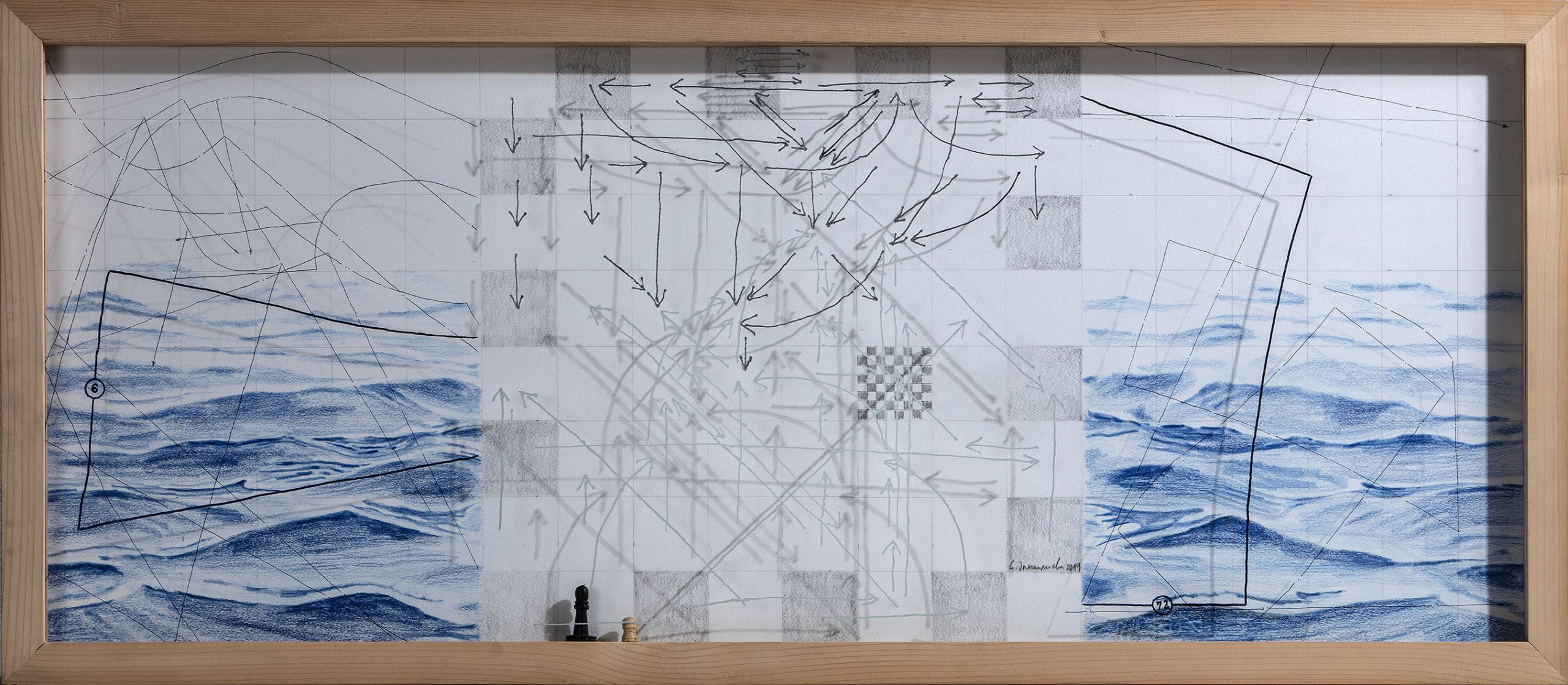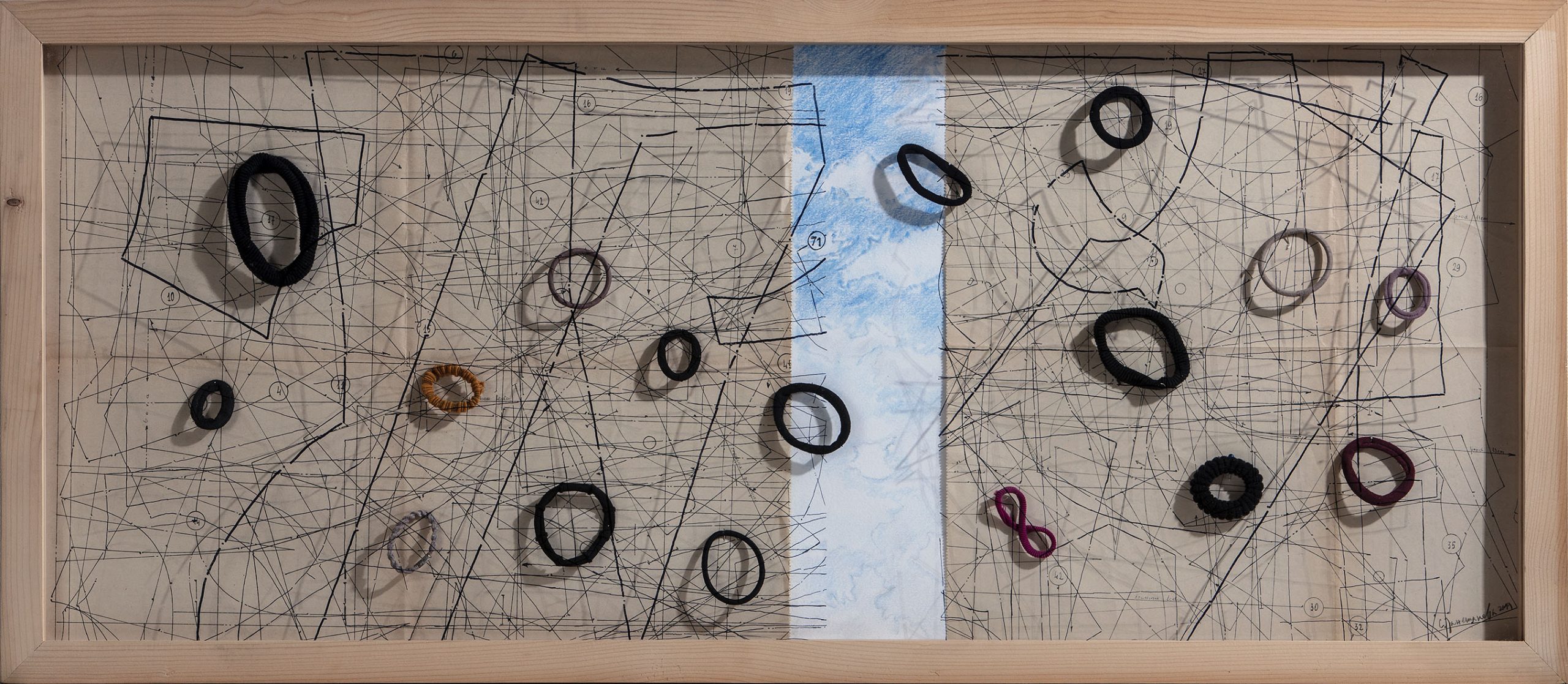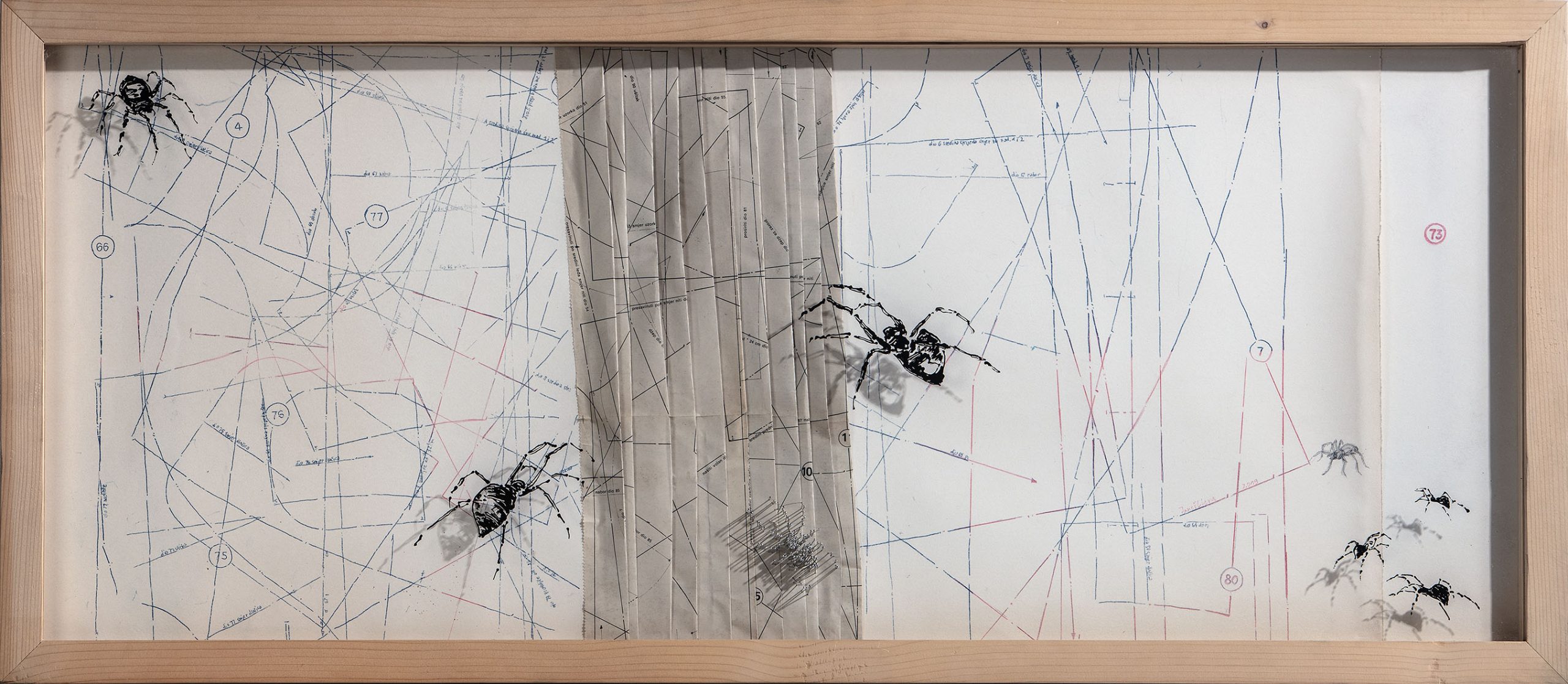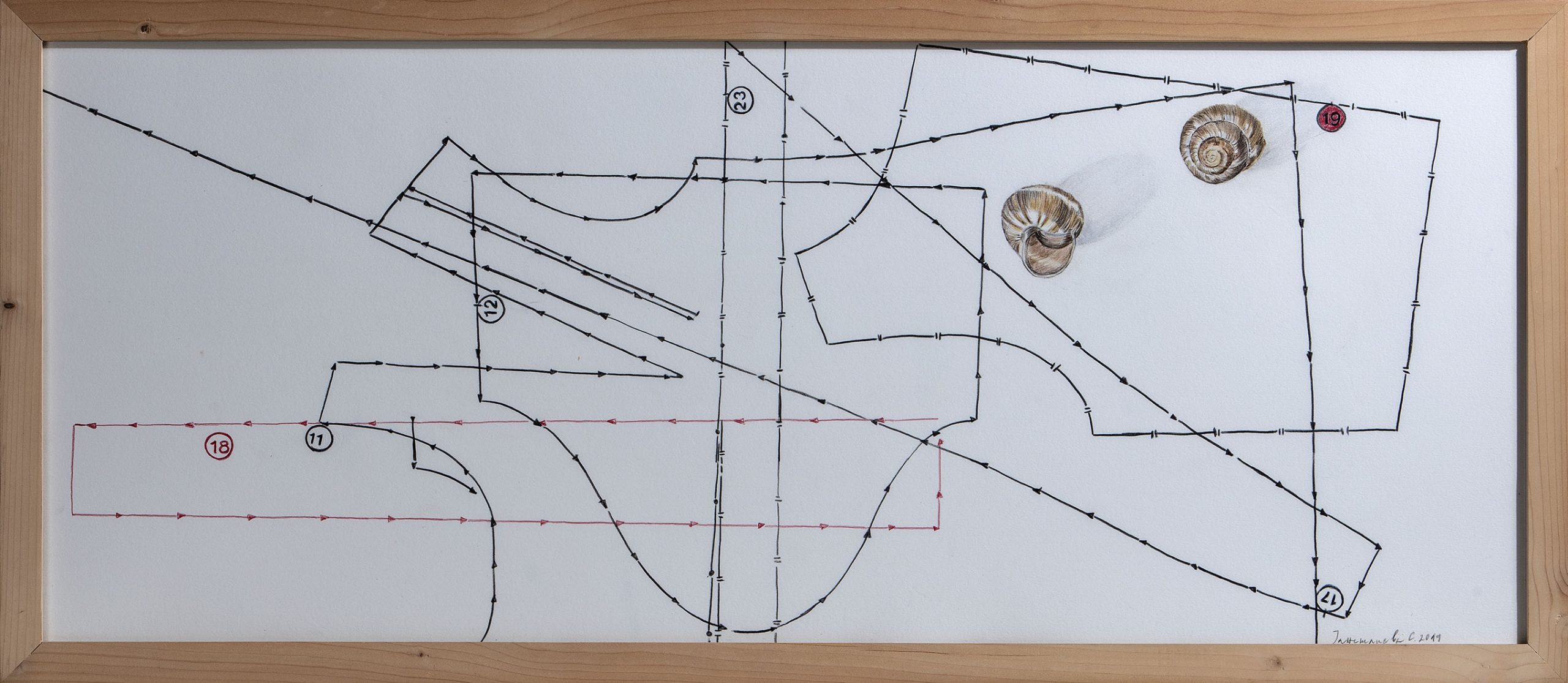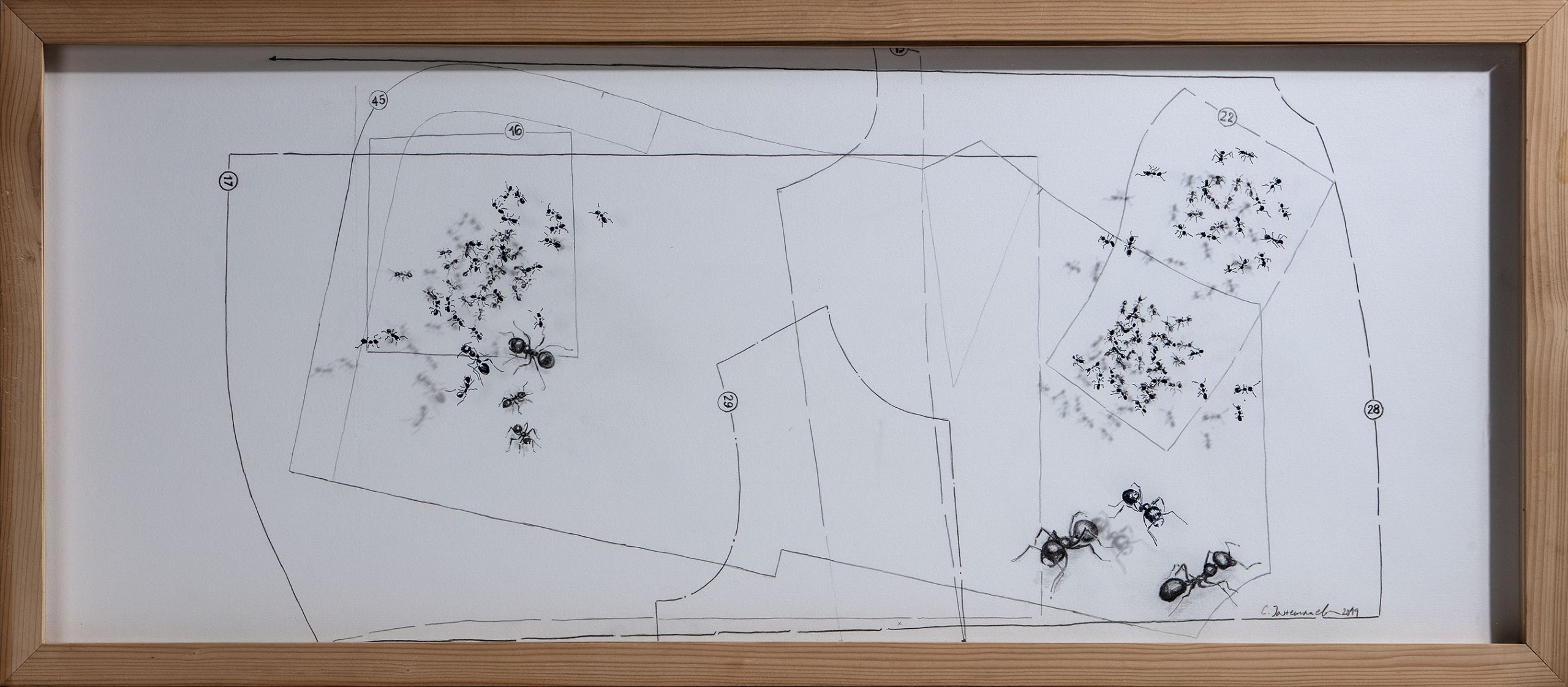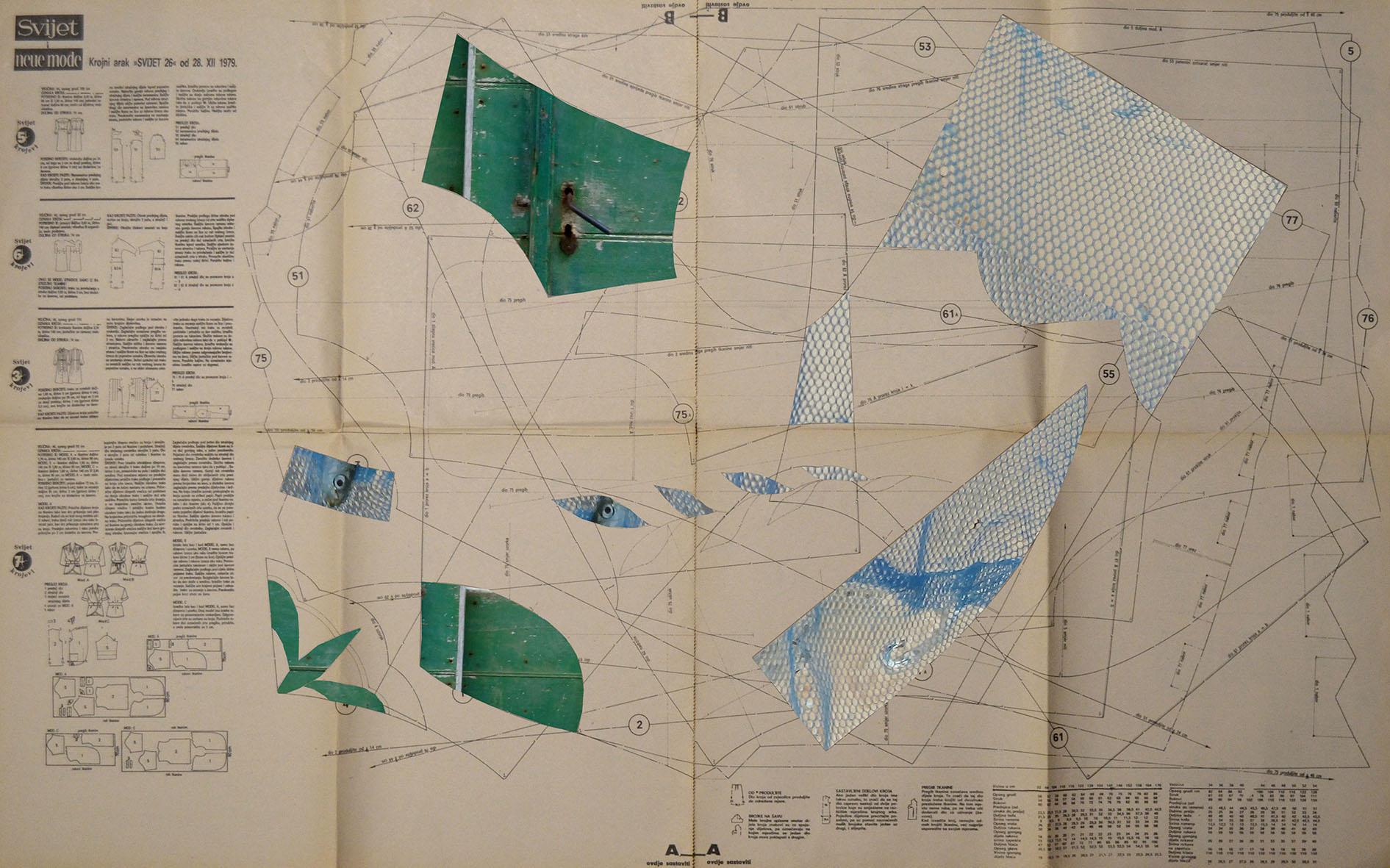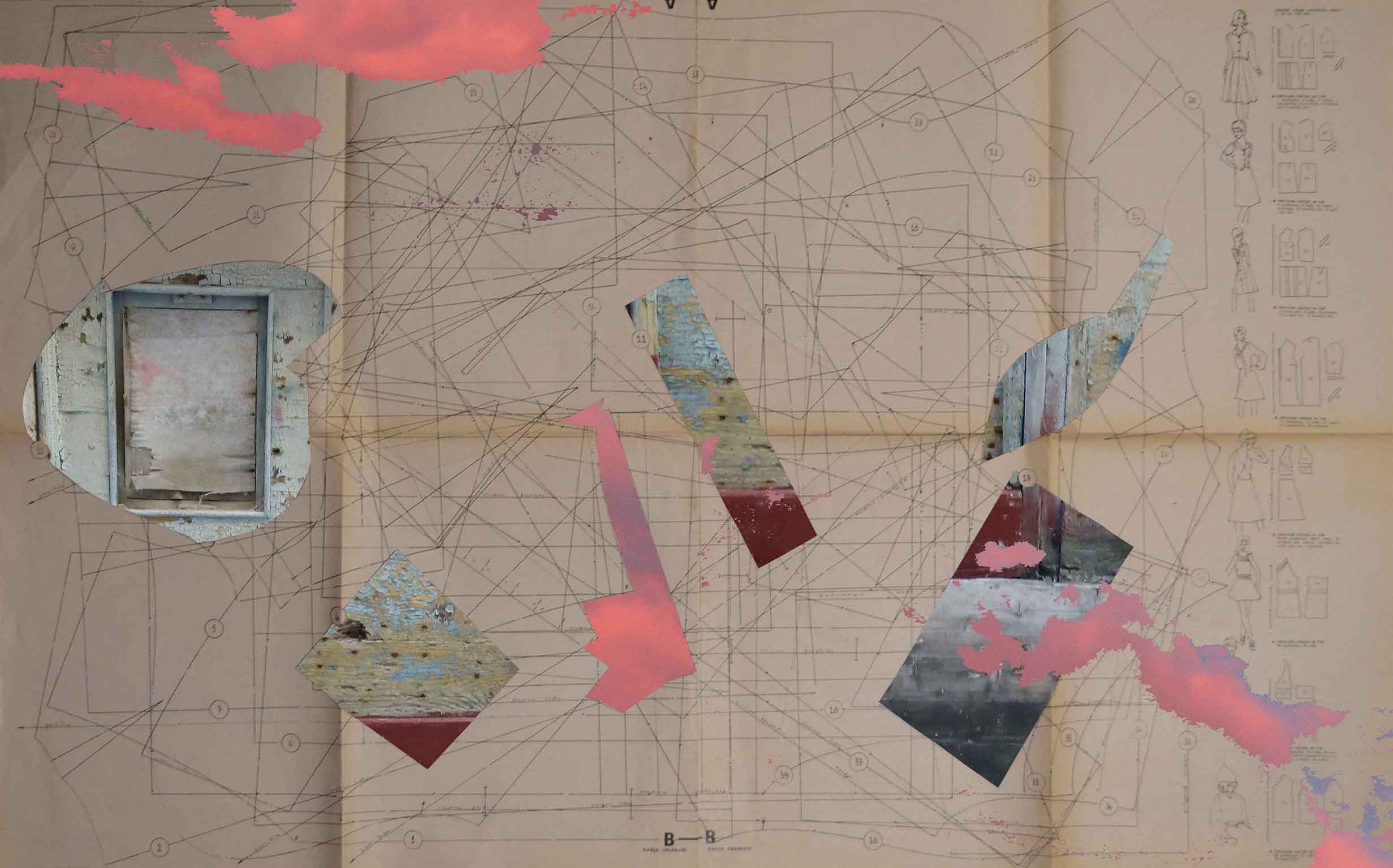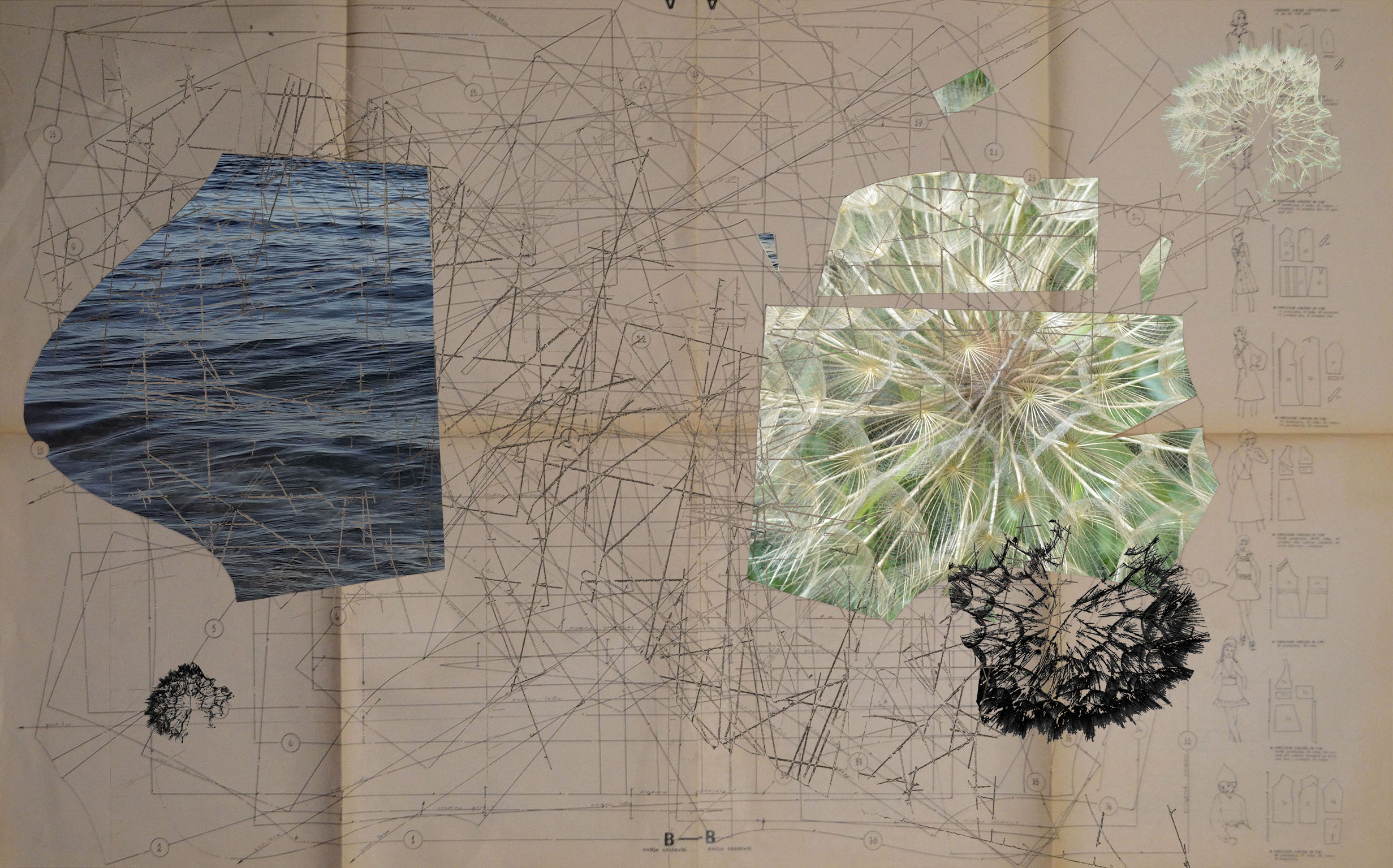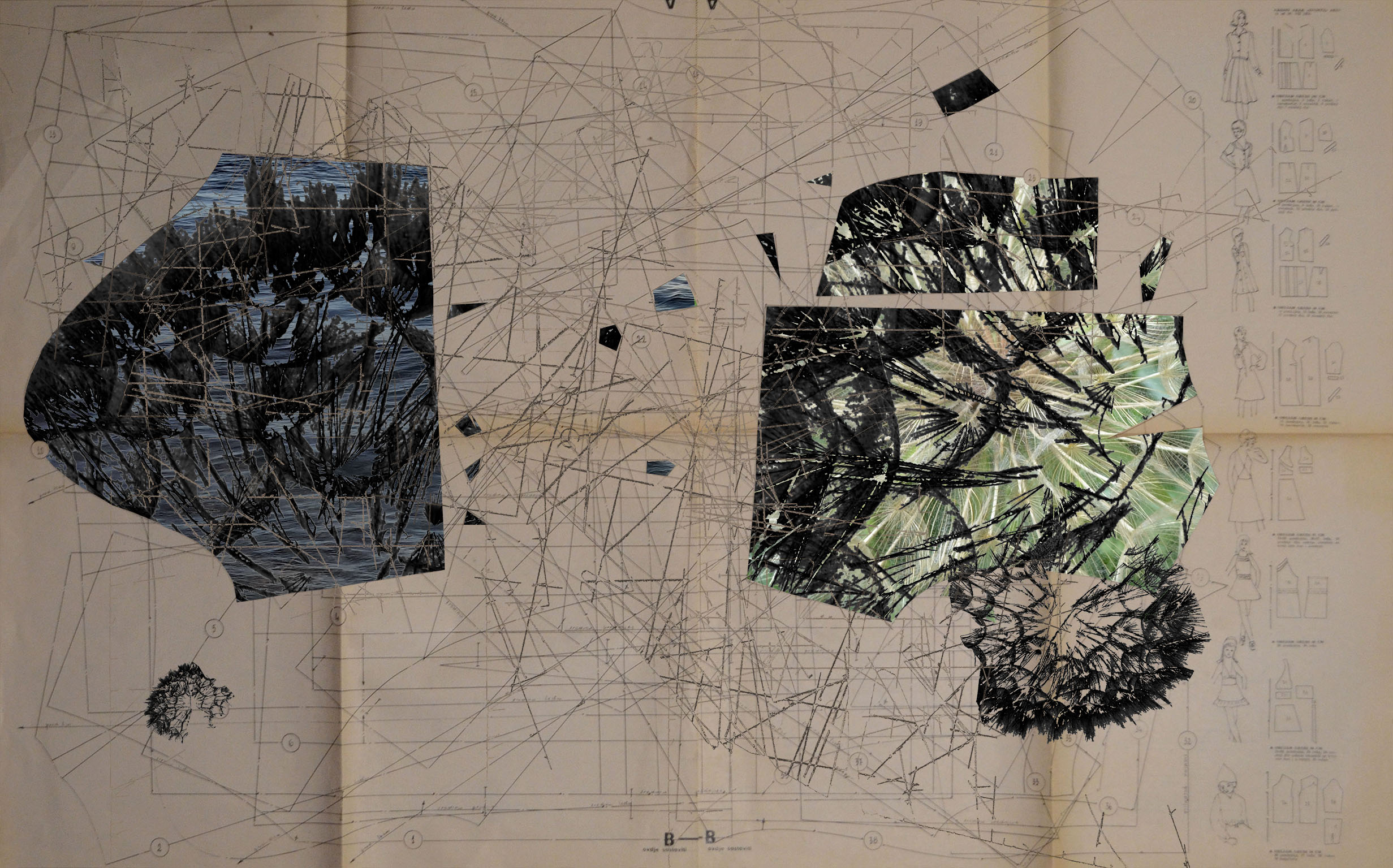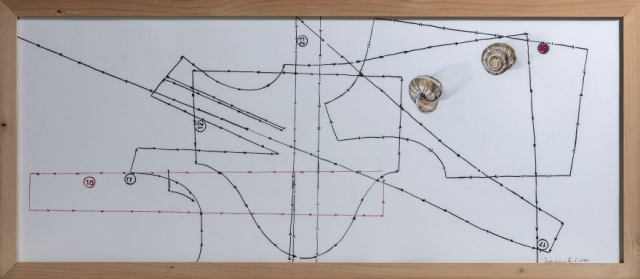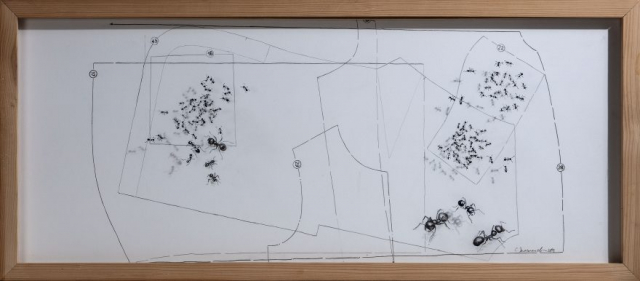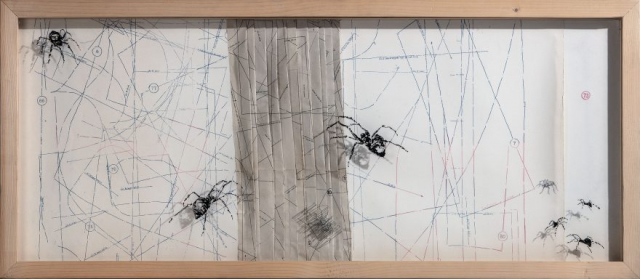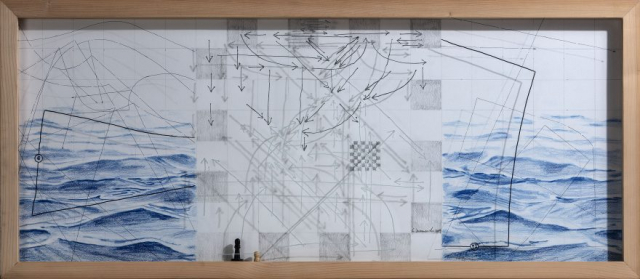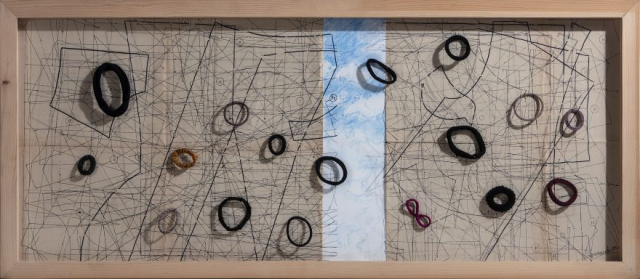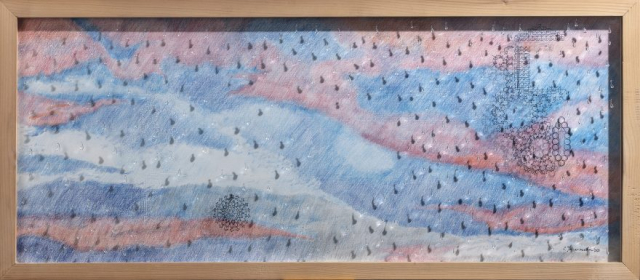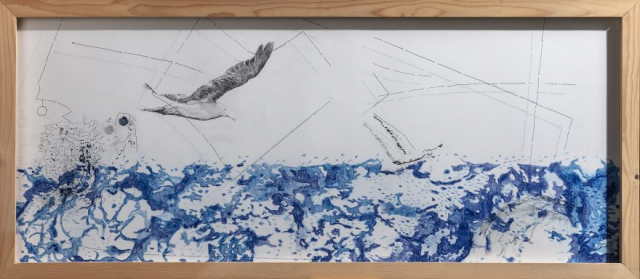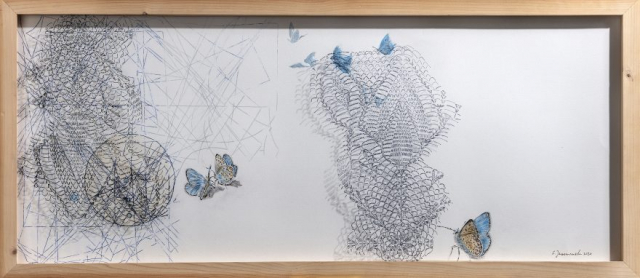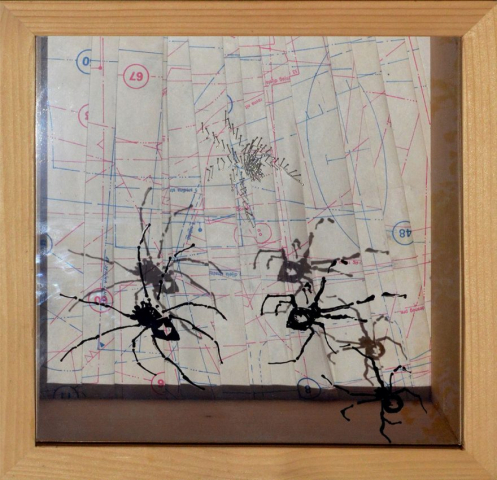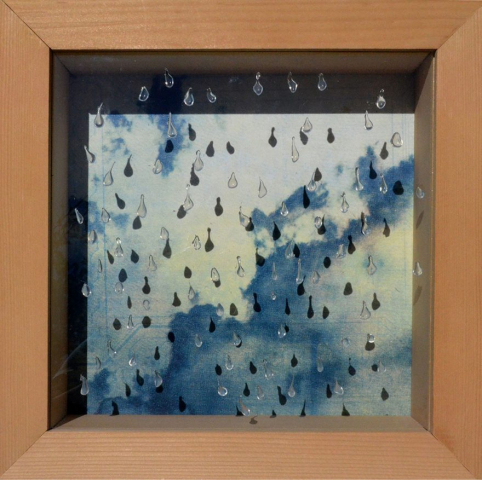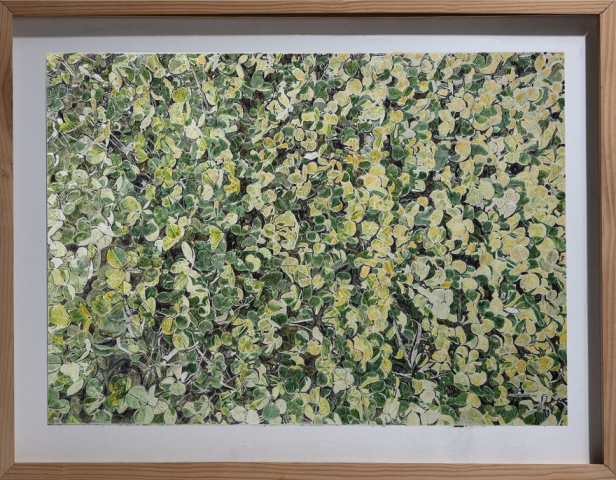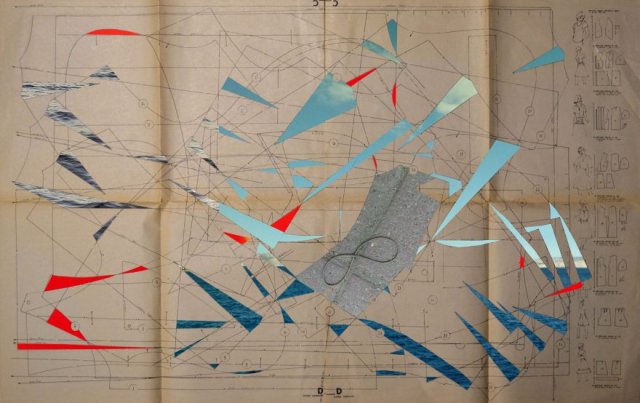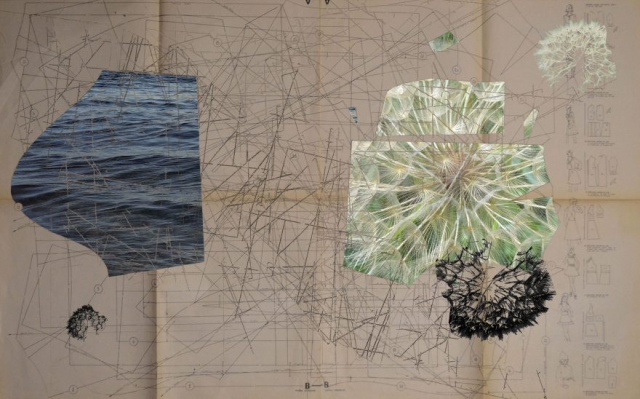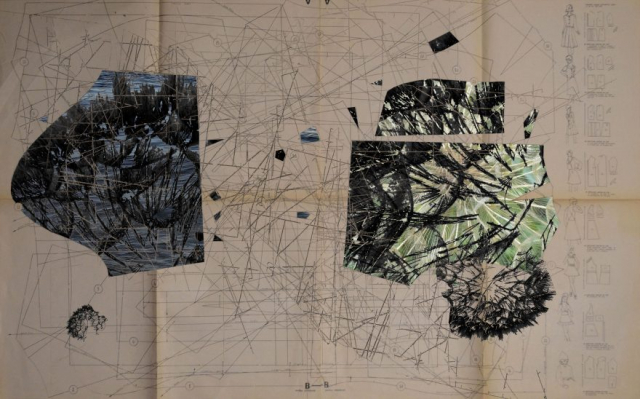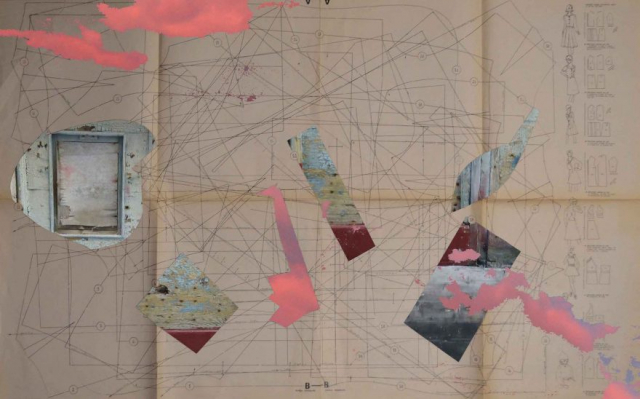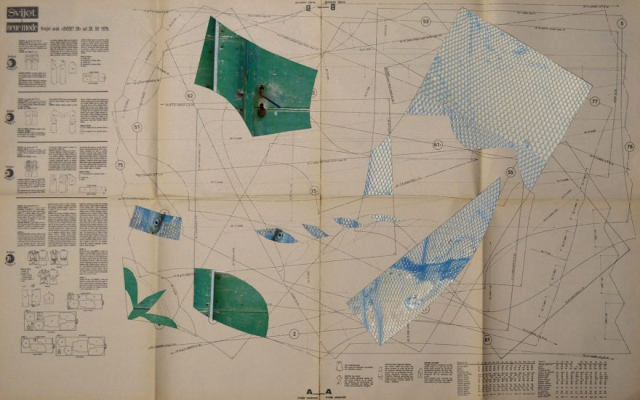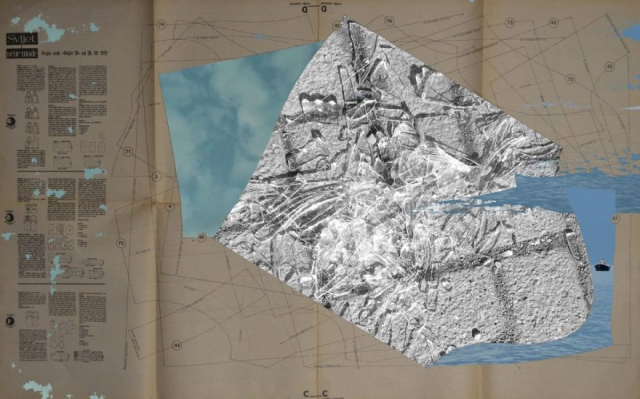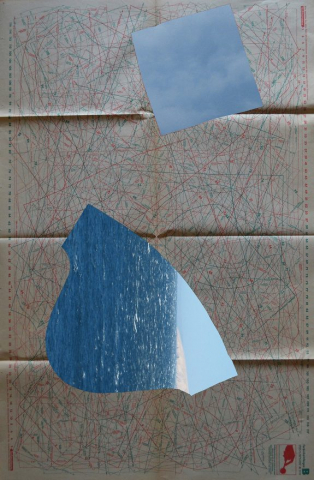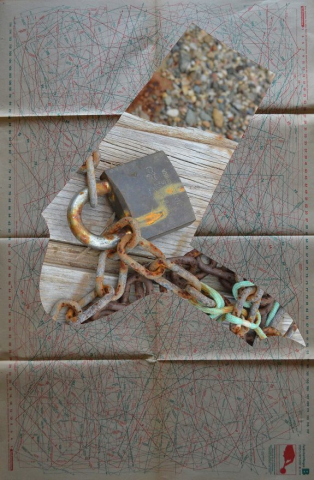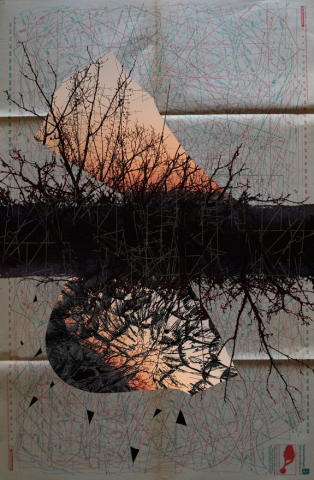‘INTERWEAVING – both a concept and a modus’, review of the latest project by Slavica Janešlieva
Author: Ana Frangovska, art historian
Slavica Janešlieva is an artist who approaches the art she creates with sincerity. It is part of her intimacy, her personal archive, domestic narratives, her micro cosmos. The analogy and contextualization of her work do not remain only and merely within the realm of her intimacy, but become also a concept which transcends into the societal milieu, addressing socio-political aspects, history, philosophy, metaphysics. Her stroke is the line, her medium is printmaking and the related ones, albeit multimedia is an area of interest too. Her element is femininity, or rather, the feminine perspective is omnipresent or in a continuous ‘mingling’ with the traditional mantric crafts of sewing, knitting, tailoring, embroidery, crochet, or present in the multi-layered feminine interpreting of the narratives she chooses.
Janešlieva’s latest drawings, collages, photos – digital collages are also reflections and reminiscences of her current period and moment in time. Unless one knows her personally and deeply, her work can simply be analyzed visually or artistically. However, if one is acquainted with the artist’s personal experiences, then, in addition to the visual effect, her work discloses each sigh, tear, argument, pleasure, dilemma, challenge to be overcome, trauma, happiness, transformation, self-awareness, disappointment, relief, withdrawal… Her work becomes a potent visual diary which stirs us outside our comfort zone and provokes us to contemplate. Her art does not offer simple narratives or associations easily comprehensible by all. It is work which nourishes the soul insatiable for quality artistic tunes, a visual riddle that needs to be solved, as well as an excellent ‘novel’ for the esthetics who know and appreciate the ‘blood and honey’ of her micro cosmos.
As emphasized above, Janešlieva is a master of the line. She uses it very adeptly creating subtle, minute drawings. Her work depicts combined techniques and unions of collage and objects, with displayed realistic (photorealistic) ants, snails, spiders, butterflies, birds, clovers, all of which ‘weave’ the visual panopticon together with the industrial linear pattern of a fashion magazine, as an equilibrium between the hand-made and the mass-produced, as emphasis of the manual contribution, as associations and synonyms for value, for weaving one’s home, for creating and protecting that home, as transformation and change, as a feeling of levitation and release…
The tailoring and embroidery patterns, some used as ready-made, others imprinted by hand, represent visual markings, but also serve as associations, design, ornaments, trace, reminiscence of times gone by, the time of our mothers, grandmothers and times which induce pleasant memories, warmth, home, nest, belonging, origin…They signify base, foundation, but also intrusion, engraving, a mark. Furthermore, their metaphorical meaning also encodes the role of tailoring one’s life, individual or collective!
The element of water bears great significance for Janešlieva. It represent the act of purification, in its literal or figurative meaning, of spiritual cleansing, the water surface and depth symbolize freedom, air, life. Water is depicted in various ways in the drawings: as sea, wide open bodies of water, breaking foamy waves, as well as through tiny rainy drops, tears, leading towards release of pressure, relief and purging. The blueness of blue (as water or sky) seems liberating, optimistic and joyous. In the drawings, Janešlieva predominantly plays with contrast through the line and the color as a background.
The drawings, collage-objects and digital collages (created with Janešlieva’s personal photographs) illustrate her need for multi-contextuality, interweaning and visual play. The element of ready-made, mentioned above, perseveres as an evidence of one’s existence, as dichotomy between reality and imagination, as an excellent correlation of two- and three-dimensional linearity and frolicking with the tangibles (tailoring patterns, safety pins, hair bands). The two- and three-dimensionality form a conceptual linear structure with its contextual analogy. The application of layers, multiple focal points and configuration of shadows add to the efficacy of the composition. Janešlieva captures the above by presenting the drawings with translucent, multiple layers and distant framing or packaging of the visual work, finalizing in a complex, artistic work, which emanates multi-conceptuality and multi-media.
Hence, to conclude, in her visual composition, Janešlieva moves from the general to the individual, towards self-awareness, or rather, by exploring her self-understanding she comprehends more broadly and deeply the world around her!? Irrelevant of the process, or the direction of the inspiration, the final product is an exceptionally conceptualized and realized work of art, which is multi-faceted, multi-dimensional, multi-media, but above all honest, remarkable and profound.
Translated into English: prof. Ana Lazarova, PhD